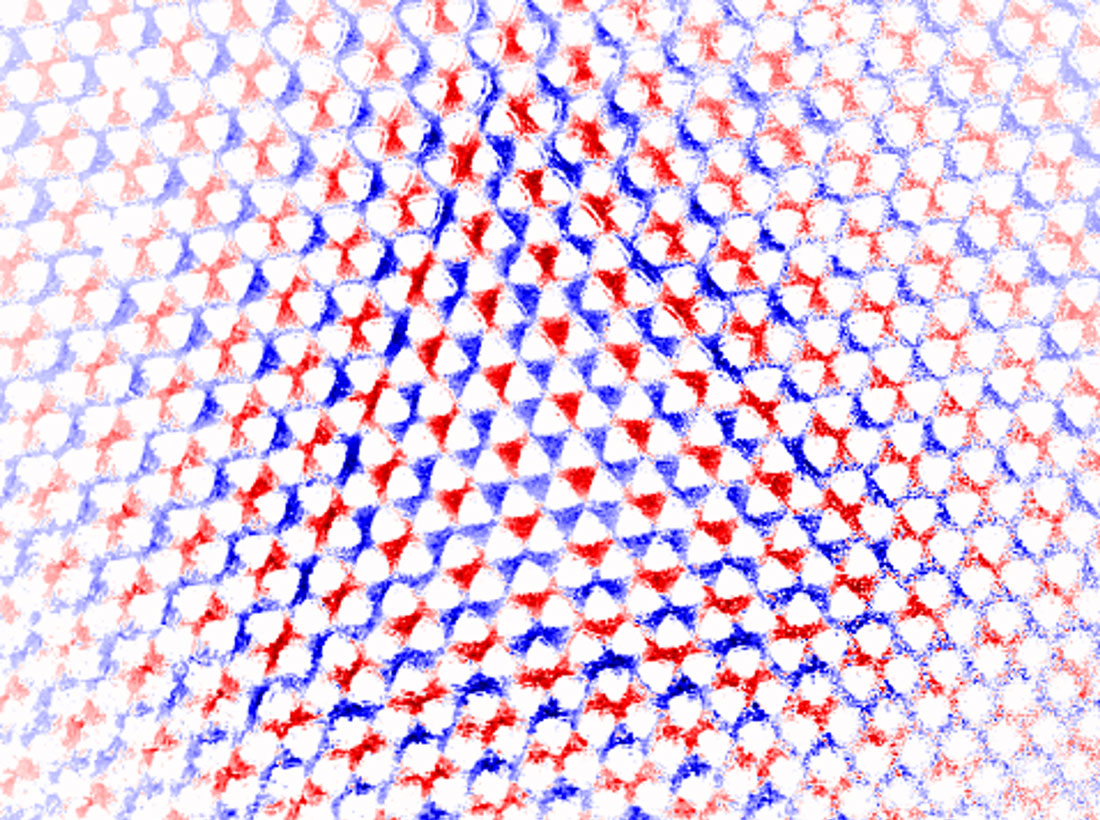Sound Signals in Computer Chips – Almost Without Signal Loss
When a drummer plays a drum, she sets the drumhead into vibration by hitting it. The vibration contains a signal that we can decode as music. When the drumhead stops vibrating, the signal is lost. Now imagine a drumhead that is ultra-thin, about 10 mm wide, and perforated with many triangular holes. Researchers at the Niels Bohr Institute, University of Copenhagen, in collaboration with the University of Konstanz and ETH Zurich, have managed to get vibrations to travel around this membrane, almost without any loss. In fact, so little loss that it is far better than even electronic circuit signal handling. The result is now published in the journal Nature.

Phonons – Sound Signals or Vibrations That Spread Through a Solid Material
The signal consists of phonons – which can be translated to what one might call vibrations in a solid material. The atoms vibrate and push each other, so to speak, so a given signal can move through the material. It is not far-fetched to imagine encoding a signal, which is then sent through the material, and here signal loss comes into play.
If the signal loses strength or parts of the signal are lost in heat or incorrect vibrations, one ends up not being able to decode it correctly.

Enlargement of the silicon nitride membrane. The colors represent the measured motion of the membrane in the out of plane direction. Red means that part of the membrane moves upward, and blue means that part moves downwards.
System Reliability is Crucial
The signals that researchers have succeeded in sending through the membrane are distinguished by being almost lossless. The membrane as a platform for sending information is incredibly reliable.
Loss is measured as a decrease in the amplitude of the sound wave as it moves around the membrane. When researchers direct the signal through the material and around the holes in the membrane – where the signal even changes direction – the loss is about one phonon out of a million.
The amplitude of current fluctuations in a similar electronic circuit decreases about a hundred thousand times faster.
Basic Research with Perspectives
Researchers at the Niels Bohr Institute, Assistant Professor Xiang Xi and Professor Albert Schliesser, explain that the result should not be thought of in a specific, future application – but there are still rich possibilities. Currently, there is a global effort to build a quantum computer, which is dependent on super-precise transfer of signals between its different parts.
Another field within quantum research deals with sensors that, for example, can measure the smallest biological fluctuations in our own body – here too, signal transfer is crucial.
But Xiang Xi and Albert Schliesser are currently most interested in exploring the possibilities even further.
"Right now, we want to experiment with the method to see what we can do with it. For example, we want to build more complex structures and see how we can get phonons to move around them, or build structures where we get phonons to collide like cars at an intersection. This will give us a better understanding of what is ultimately possible and what new applications there are," says Albert Schliesser. As they say: "Basic research is about producing new knowledge."
- Link to the scientific publication: https://pubmed.ncbi.nlm.nih.gov/40468080/
Contact
Albert Schliesser, Professor
E-mail: albert.schliesser@nbi.ku.dk
Phone: +45 35 32 54 01
Xiang Xi, Assistant professor
E-mail: xiang.xi@nbi.ku.dk
Phone: +45 35 32 82 16
